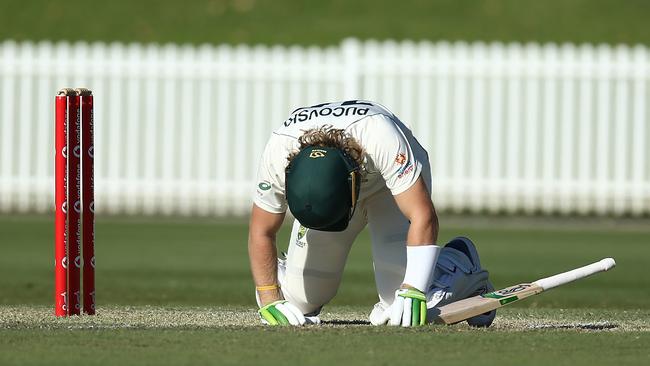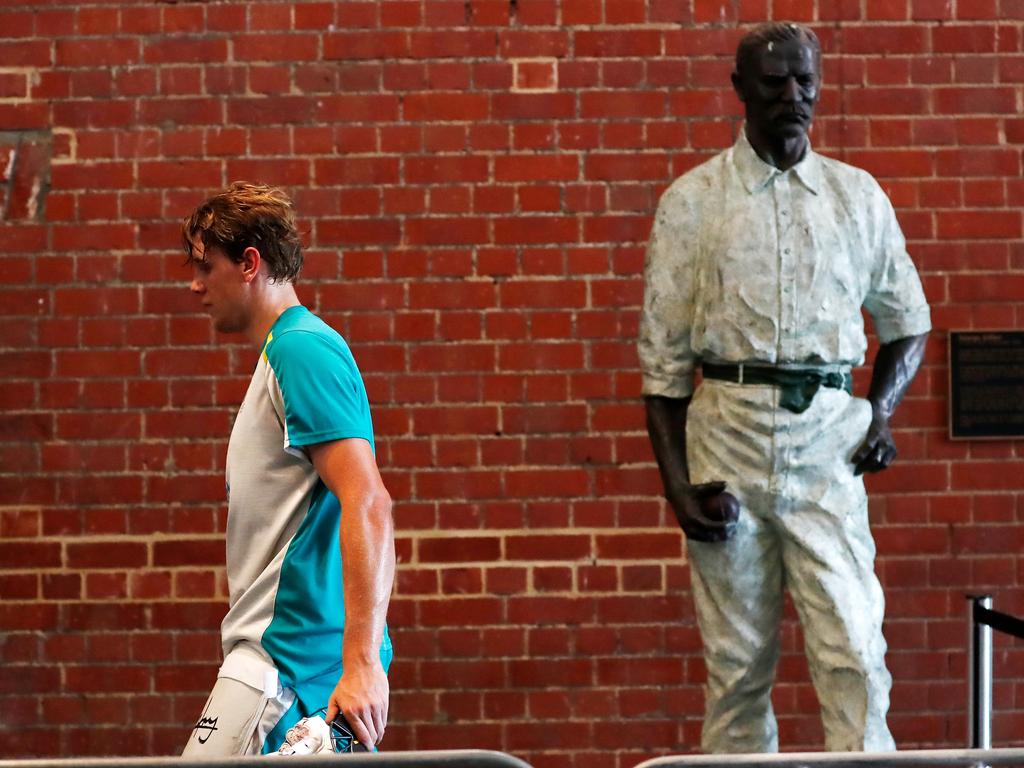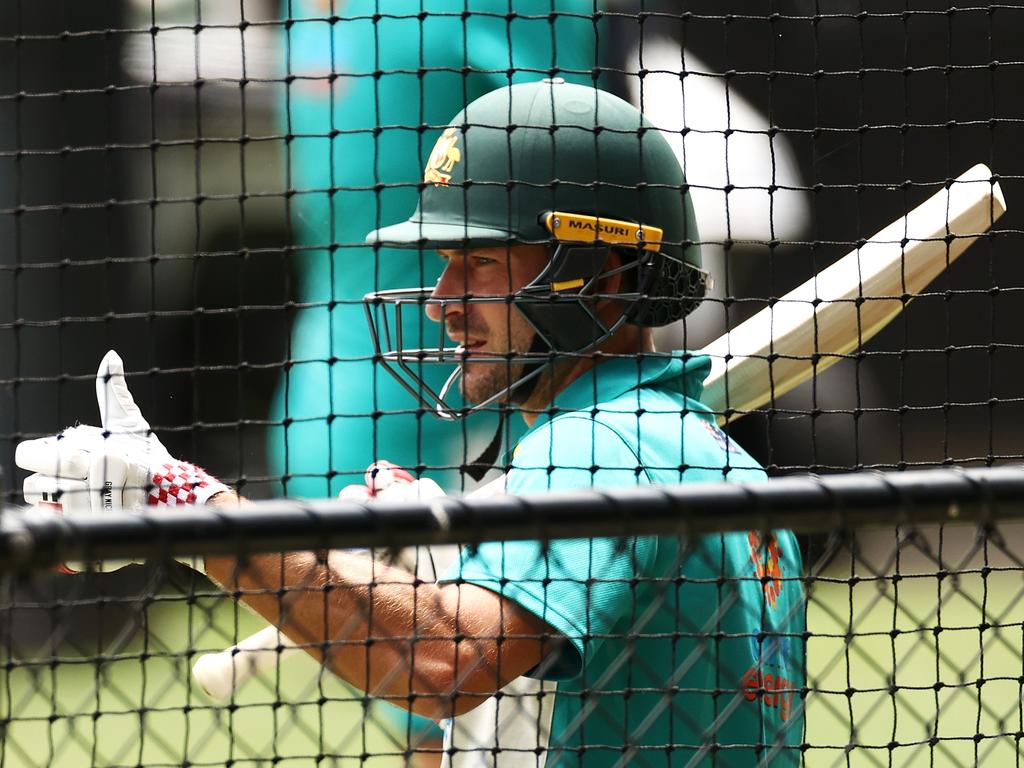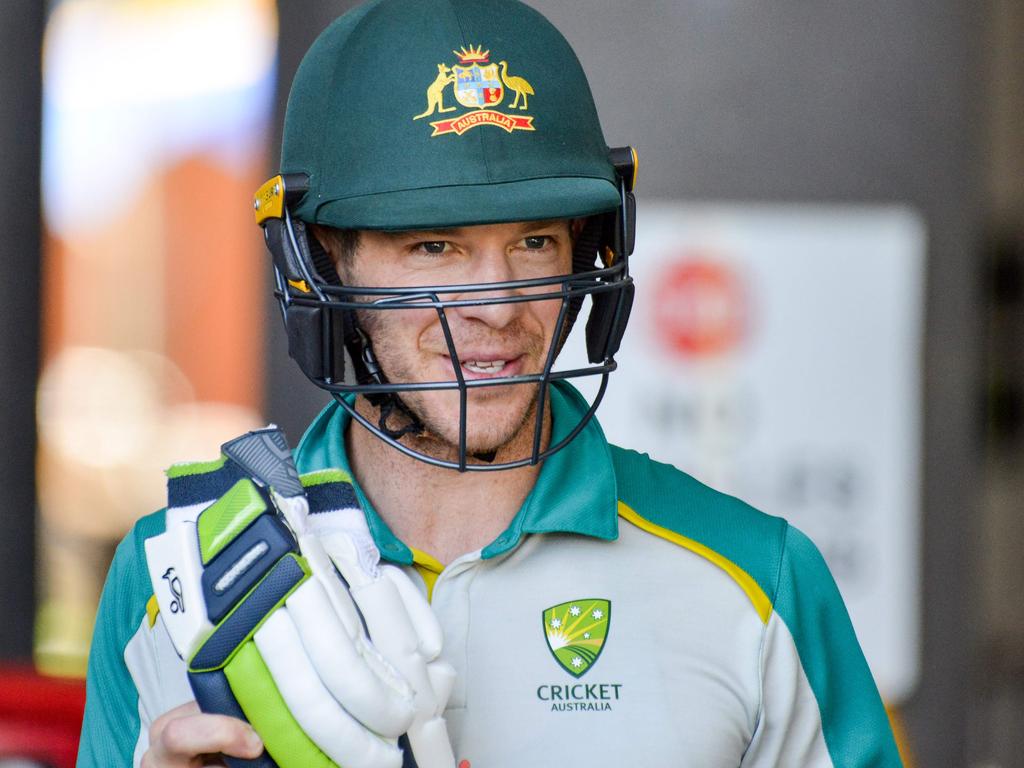
In England, his story may have passed many by, but it is remarkable in part for its sheer misfortune. Three times now in the space of two years Pucovski has been on the brink of an Australia Test debut only for fate to intervene through a combination of mental-health issues, the whims of selectors and concussion – of which Pucovski has suffered nine episodes (not all cricket or batting related), the latest causing his withdrawal from this week’s first Test against India.
It was in a match for Australia A against India recently that Pucovski was felled by Kartik Tyagi. Felled is an accurate term, because having been hit flush on the helmet, he spent a good while on his haunches, bent double on hands and knees like a man retching after a dodgy meal. It is always a distressing sight when a batsman is stricken, and this was doubly so given Pucovski’s history of concussions and a Test debut which was tantalisingly close but receding by the second.
Head injuries come at an acutely sensitive time. That much will not have bypassed lovers of sport in England. As the son of a professional footballer who played in the early 1960s — a defender for whom heading a heavy, rain-soaked leather ball was a daily habit now understood to be a risk — I have followed that story closely. As the father of a boy who suffered multiple concussions in a short schoolboy rugby career, I am not surprised at the existential crisis gripping that game in its crazy post-amateur guise.
In Australian cricket, the issue is especially sensitive given the death of Phillip Hughes, the fine young batsman from NSW, who died after he was hit on the neck by a bouncer from Sean Abbott six years ago. Those who watched Amazon’s documentary series The Test will have sensed the echoes of that tragedy in the Australia dressing room at Lord’s in 2019, as Steve Smith was lying on the ground having been felled by Jofra Archer’s bouncer, as if poleaxed in a heavyweight boxing contest.
Australia head coach Justin Langer is no stranger to the issue. Langer was one of the best openers of his day but suffered more blows to the head than most, one of the last being by Makhaya Ntini, of South Africa, in his 100th Test, which prevented him from batting in the second innings. The seriousness of that blow was signalled by the captain Ricky Ponting’s intention to declare and lose the match rather than allow Langer to bat at No 11, with Australia close to the winning line.
All of this, then, is the context for a provocative article written by Malcolm Knox in The Sydney Morning Herald last Friday, where he called for the bouncer to be outlawed. It was a nuanced piece, in which Knox said he would not relish watching a sanitised game, but that the time had come. “It will hurt cricket to lose the bouncer, but the bouncer is hurting cricket more,” he wrote. The game, he argued, has a duty of care to those who play it.
I admire Knox’s columns but I profoundly disagree with this one. He is drawing the wrong conclusion and to reason why, we have to go back to Pucovski moments before he was on his haunches. Really, there was only one conclusion to draw from Pucovski’s predicament and that was how badly he played that particular bouncer, essaying something in between a duck and a hook shot from a crouched position in line with the ball.
Reactions from extremes of the spectrum are not helpful. Neither Knox’s, which would sanitise and therefore profoundly change and diminish the game, nor those who would simply ignore Knox as a provocateur and move on. What Pucovski’s latest injury should do is reignite the awareness of danger and notion of risk that has become increasingly absent with the advent of helmets and protective gear more generally.
Anecdotally, it seems to me that more batsmen are getting hit on the head now than before.
There is no question that techniques and attitudes towards the short ball have changed – mainly as a result of protective equipment. A bouncer is seen less as a threat than as an opportunity to score. Pre-helmets, a small number of batsmen were renowned as regular hookers of the ball. Now, very few batsmen do not play the shot – and many play it badly, thus increasing the risk.
After an era where batsmen moved predominantly back and across in their crease, with the bowler as aggressor and the batsman on the back foot, helmets have helped flick the switch, with batsmen now on the front foot, the aggressors. Hooking off the front foot and in line with the ball, as opposed to outside the line of the ball (so that if you miss, the ball misses you), is a recipe for trouble — as Pucovski found out. If you can’t hook, learn to duck or sway.
To put cricket in the same boat as rugby (or boxing) is fanciful. Already, there are plentiful protections in place. The beamer has long been outlawed, “bodyline” fields too. In international cricket, bowlers can bowl only two balls an over above shoulder height. The game has moved to adapt to concussions through the sensible use of substitutes, Marnus Labuschagne being the first when he replaced Smith at Lord’s. The Law (41.6.1) protects — or should protect — tailenders from a barrage of short balls, designed to inflict hurt and damage.
Readers may remember I wrote on the last Ashes tour about the umpires’ reluctance to invoke that Law when England’s tailenders, Jake Ball and James Anderson, received a barrage at Brisbane and Perth. I was, of course, laughed out of town by most Australians, although not, it must be said, by Knox or his colleague Greg Baum.
But I did not want to see the bouncer outlawed then and still don’t. A fast bowler, with a bouncer in their armoury, is one of the great sights in the game. It is one of the great challenges for any prospective Test batsman and should remain so. I cherish, still, the many battles I “enjoyed” against Allan Donald and company. Removing that thrill and sense of danger would diminish the game, would further advantage already-advantaged batsmen, shifting the balance unevenly in their favour, and would hurt the format of the game – Test cricket – most cherished and most threatened.
Pucovski’s latest concussion is a reminder that the game carries risk; that a short ball can be dangerous; that not every short ball need represent an opportunity to score; and that batsmen must give some thought again as to how they best combat that problem. The answer is not to outlaw the bouncer, but to undertake a recalibration of how some batsmen can best counter it. The Pucovski problem can start that conversation anew.
THE TIMES








In time, whether he plays much international cricket or not, Will Pucovski may become a significant figure in the history of the game. Around this 22-year-old Victorian swirls a debate about the essence of the game: the balance between bat and ball, between risk and play and between the sport as simple light entertainment or something more reflective of life, with all the hardship and threat occasionally involved therein.